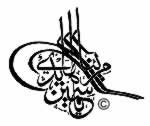|
Henna
SKIN
decoration in the Arab world is practised mostly by women and
takes the form of designs on hands and feet using henna,
which fades away after a few weeks.
The complex patterns seen
throughout the Middle East are normally achieved using
stencils which can be bought cheaply in the souqs (markets).
Increasingly, street artists
in resorts such as Marrakesh and Sharm al-Sheikh provide
henna decoration of varying quality for visiting tourists of
both sexes.
Henna
(Wikipedia)
The
Henna Page
A comprehensive website about henna - including how to do it yourself.
Tattoos
ALTHOUGH tattoos can be seen
in many Arab countries, tattooing is not a particularly Arab
tradition and strict Muslims disapprove of it (click
here for an
explanation).
Tattooing is nevertheless
common among the Berbers of north Africa, where small designs with
symbolic meaning are used (mainly by women). Egyptian Christians
often have a cross tattooed on their hand or wrist. These designs
are very simple - often crudely done - and we are not aware of any Arab
equivalent to the elaborate tattoos used, for example, by the Maoris and
Pacific islanders.
We are often asked to provide names or
phrases in Arabic to be used as tattoos, but it is not practical
to do this by email. The best solution, if you don't know the
Arabic script, is to find someone locally who does.
Most non-Arabic names can be
easily adapted to the Arabic script, but there may be more than
one possible spelling. It is therefore advisable to consult
several Arabic speakers to see which they think is best.
Although there are plenty of
tattoo artists that do Japanese word-symbols, we have been unable
to find any on the internet that specialise in Arabic tattooing (if there are any, please
let us know). This
means you will probably have to get your own artwork and then find
a tattooist to transfer the design to your skin.
For a simple basic design, possible sources of artwork would
be:
- A laser print from a computer
that is set up for Arabic word-processing
- A proof from a typesetter who
specialises in Arabic printing
- Traditional hand-lettering done
with a calligraphic pen
Note that Arabic has
several distinctive type styles that can be used (see the Calligraphy
page).
The options described above
will not look as good as a specially-designed piece of
Arabic calligraphy. Our Calligraphy
page has links to various examples.
For religious reasons some calligraphers (e.g. Mamoun
Sakkal) refuse
to design tattoos, but one company that is happy to provide
custom-made designs - such as names - for tattoo purposes is
Hobok.
Prices are reasonable and they send the finished work by
email.
|
 |
|
|
Tattoo
design by Hobok. Click
for more examples |
|
We would strongly advise you not
to try to make tattoos out of any existing works of Arabic calligraphy
that happen to take your fancy. Not only is this unfair to the
artists, but the designs usually contain religious quotations and
their use as tattoos, especially by non-Muslims, could be
considered offensive.
Articles
Skin,
flesh and art making the human canvas your own
Daily Star (Lebanon), 2 December 2003
Art
and fraud: Tattooing culture rides popular wave
Daily Star (Lebanon), 3 December 2003
Hygiene:
a life and death issue in the studio
Daily Star (Lebanon), 4 December 2003
Tattooing:
a new women's fashion rage?
Daily Star (Lebanon), 5 December 2003
Beyond
the pale? Perhaps, but body piercing has arrived and is gaining ground
Daily Star (Lebanon), 6 December 2003
|